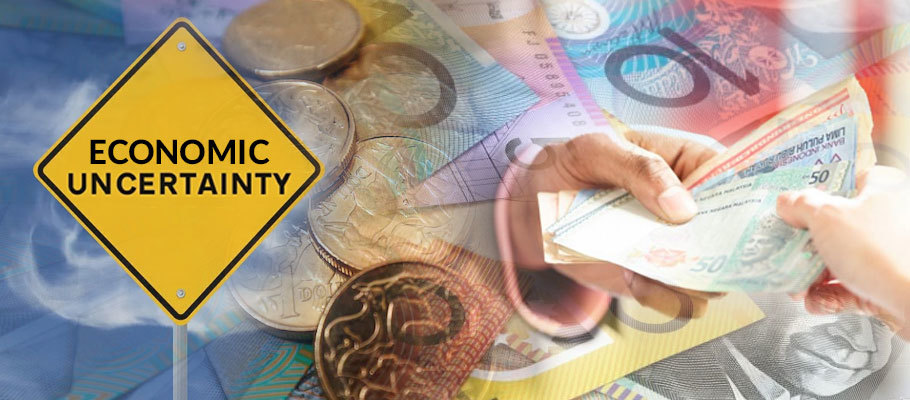
Published: April 23rd, 2021
When will Australia’s economy return to normal? Forex traders and currency analysts have seized on recent comments by a senior government minister in Canberra that indicate it could be some time yet before the country shrugs off the economic impacts of COVID-19.
Widely reported comments by Health Minister Greg Hunt suggest the island nation’s borders could remain shut or severely restricted for an indefinite period. ‘Vaccination can’t guarantee borders are safe to re-open, he told the press this week. ‘Even if we achieve 100 per cent vaccination for every Australian, it wouldn’t mean we could simply open the borders to all.’
For the Australian Dollar (AUD), ongoing political uncertainty will almost certainly have a negative impact vis a vis other currency majors.
In a globalised economy, travel is a central consideration for growth. The minister’s comments could mean Australia’s economy will be stuck in slow gear for the near term and potentially lag behind economies successfully vaccinating themselves back to normality.
Both Australia and nearby New Zealand have adopted a zero-tolerance approach to tackling the coronavirus outbreak. Eliminating it is the stated goal, rather than the managed approach taken by countries like the US and UK.
That may be the best route in terms of public health outcomes. Still, while countries like New Zealand and Vietnam have successfully kept COVID-19 numbers to a minimum, the policy hasn't worked so well in Australia, and it's dragging economic prospects downward.
There have been notable delays in Australia's vaccination programme and a general sense that the government is reacting to events rather than controlling Covid’s spread. This week officials in Canberra announced the country was abandoning inoculation targets thanks to dwindling supplies and questions over the AstraZeneca vaccine’s potential for creating blood clots in some patients.
For now, its dulled market enthusiasm for AUD but not triggered any sort of selling frenzy.
Currency analysts at Credit Suisse told investors in a note this week that vaccine delays ‘seem more likely to limit upside for AUD rather than signal the start of a price slide.
‘Given the government’s apparent worry over any rise in COVID-19 infection rates, we believe the balance of risks could quickly tilt to the negative if infection numbers go up again.’
Policymakers in the national government will likely have to accommodate themselves to some level of COVID-19 spread in the country if international borders are ever going to re-open. This is the approach most countries are taking as a medical consensus settles around the notion that that COVID-19 will become an ongoing and ever-present pathogen like cold or flu, but more dangerous.
An article published in the British Medical Journal this year states that COVID-19 won't ever be eliminated entirely. 'Instead, it will become endemic, moving forward and circulating amongst segments of the world’s population for years to come. Infection rates will ebb and flow, and we will see new outbreaks and new strains in places where it was once thought to be eradicated.’
Just this past weekend, Australia stopped its programme of AstraZeneca vaccinations for under-50s. That puts the country on the same footing as the UK and most EU countries, which have decided the vaccine’s blood clot risks require further study and have established age guidelines restricting the vaccine’s use.
That's at least a partial blow to hopes for fast economic recovery Down Under. The AstraZeneca vaccination has one of the highest efficacy rates of all the COVID vaccines currently approved for use.
FX strategists at Crédit Agricole told Reuters this week that Canberra’s vaccination rollout relies heavily on the AstraZeneca vaccine. They noted that Australia’s Prime Minister, Scott Morrison, has reneged on pledges to inoculate all eligible adults in the country by October and stopped short of committing to a new timeline. That leaves Australia ‘well behind most G10 countries’ in the race to rollout vaccinations.
While the country is an advanced player in the pharma space and could manufacture its own AstraZeneca vaccine doses amid tightening global supply, limiting its use will make the country more reliant on Pfizer’s vaccine, which is the only other option approved by the health ministry.
As international demand for the Pfizer vaccine is now soaring thanks to blood clotting concerns for both the AstraZeneca and now Johnson & Johnson vaccines, Australia's inoculation programme seems doomed to keep missing its targets.
The Australian dollar fell back against the British Pound and greenback in the first three weeks of this year, with analysts suggesting this was due to the rapid progress seen in those countries in terms of rolling out vaccinations.
In the UK, it's allowed Westminster to move forward with cautious plans to release the economy from lockdowns, sector by sector. International travel, meanwhile, is expected to be slowly re-opened in mid-May.
Crédit Agricole has told investors that international travel and vaccinations have only recently become an issue in Australia, which contained the virus successfully through much of 2020. This week the bank’s models for AUD/USD indicate that the country’s sub-standard vaccination rate compared to America’s is putting downward pressure on the exchange rate.
For now, the Aussie Dollar remains relatively well supported in forex markets where a supportive global macro-economic environment drives sentiment. However, an increasing number of analysts, financial journalists and influential traders are raising questions about the impact of vaccination rollouts and what increasingly seem to be the limitations of Canberra’s policy of eliminating COVID-19 completely.
Downside risks will become more likely as those questions get louder and start to act as a prime driver for Aussie Dollar price movements.
The Australian-to-U.S. Dollar exchange rate was 0.7684 at time of writing. Sterling-to-Australian Dollar was 1.7953.